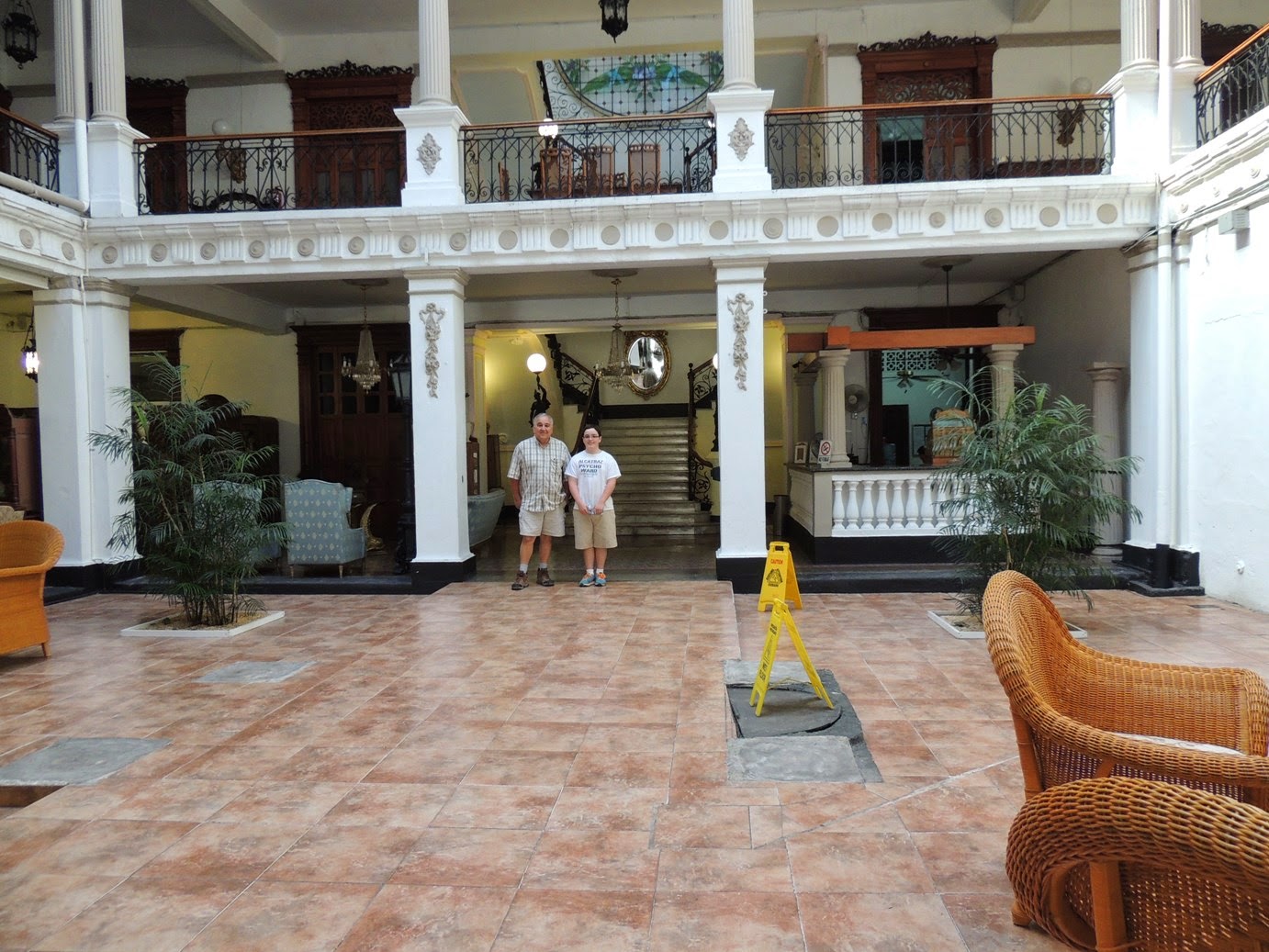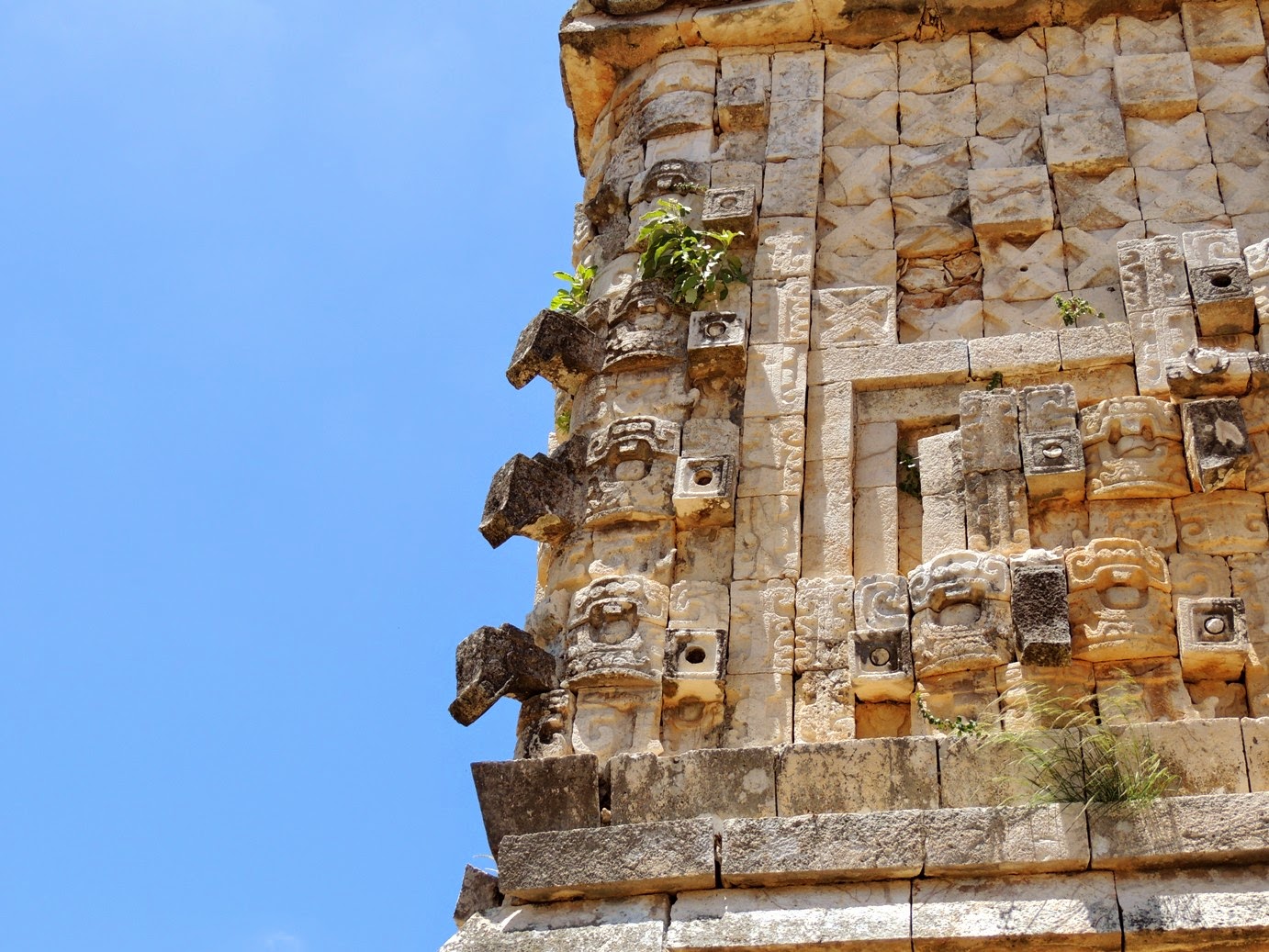We had a very restful
night in the Grand Hotel, although we had a different interpretation of “cold
setting” on the air conditioner than the natives there. Apparently cold to people in Merida means 75
degrees and cold to us means 60, needless to say the air conditioner only went
down to about 72. It was a beautiful
morning in downtown Merida. Everyone was
up and working by 7:00 a.m., the shops were opened and the aroma from the
bakery down the street made want to go and stuff myself with everything they
had. After a great breakfast we made our
way out of the city to Uxmal, our destination.
Uxmal was founded
about 500 A.D. by Hun Uitzil Chac Tutul Xiu. For generations Uxmal was ruled
over by the Xiu family. It was the
most powerful site in western Yucatán, and for a while, in alliance with Chichen Itza, dominated all of
the northern Maya area. Most of the city's major construction took place while
Uxmal was the capital of a Late Classic Maya state around 850-925 AD. After
about 1000 AD, Toltec invaders took over, and most building ceased by 1100 AD.
No new major
construction seems to have been made at Uxmal after 1200 AD, possibly related
to the fall of Uxmal's ally Chichen Itza and the shift of power in Yucatán to Mayapan. After the Spanish conquest of Yucatán (in
which the Xiu allied with the Spanish), early colonial documents suggest that
Uxmal was still an inhabited place of some importance into the 1550s. As the
Spanish did not build a town here, Uxmal was soon after largely abandoned.
Unlike Chichen Itza,
where you practically get attacked by vendors everywhere, Uxmal was vendor
free. Not only did we have more a quiet
time to reflect on the history and the amazing construction, we could also
climb and feel the power of the Mayas sitting on a temple on top of the
pyramids and other royal and priestly buildings. Looking back the great number of tourists
being taken to Chichen Itza on a “three-hour” tour from Cancun and the hundreds
of vendors allowed on the avenues in the site itself makes Chichen Itza a bad
experience for someone wanting to “feel and walk among” the history of the Maya
and the culture. If you want to immerse
yourself, Uxmal is where to go.
Here is a picture of the complex. I was breathing a little hard after climbing several hundred steep steps.
Uxmal is considered one of
the most important archaeological sites of Maya culture. Its buildings have smooth low walls that open on ornate
friezes entwined snakes and, in many cases two-headed snakes are used for masks
of the rain god, Chaac. Its big noses represent the rays of
the storms. The Maya architecture here
is considered matched only by that of Palenque, another Mayancity about 500 miles to the south, in
elegance and beauty.
The
Governor's Palace,
a long low building atop a huge platform, with the longest façades in
Pre-Columbian Mesoamerica.
The Adivino
(a.k.a. the Pyramid of the Magician or the Pyramid of
the Dwarf), is a structure, unusual among Maya
structures in that its layers' outlines are oval or elliptical in shape,
instead of the more common rectilinear plan.
Entrance on top of pyramid
The Nunnery
Quadrangle (a nickname given to it by the Spanish; it was a government
palace) is the finest of Uxmal's several fine quadrangles of long buildings. It
has elaborately carved façades on both the inside and outside faces.
A large Ballcourt
for playing the Mesoamerican ballgame. Its inscription says
that it was dedicated in 901 by the ruler Chan Chak K'ak'nal Ajaw.
The Mayan script,
also known as Mayan hieroglyphs, is the writing system of the Maya
civilization of Mesoamerica, presently the only Mesoamerican writing system
that has been substantially deciphered and over 90 percent of the Maya texts
can now be read with reasonable accuracy.
And there are iguanas everywhere. Here are two fighting.



















No comments:
Post a Comment